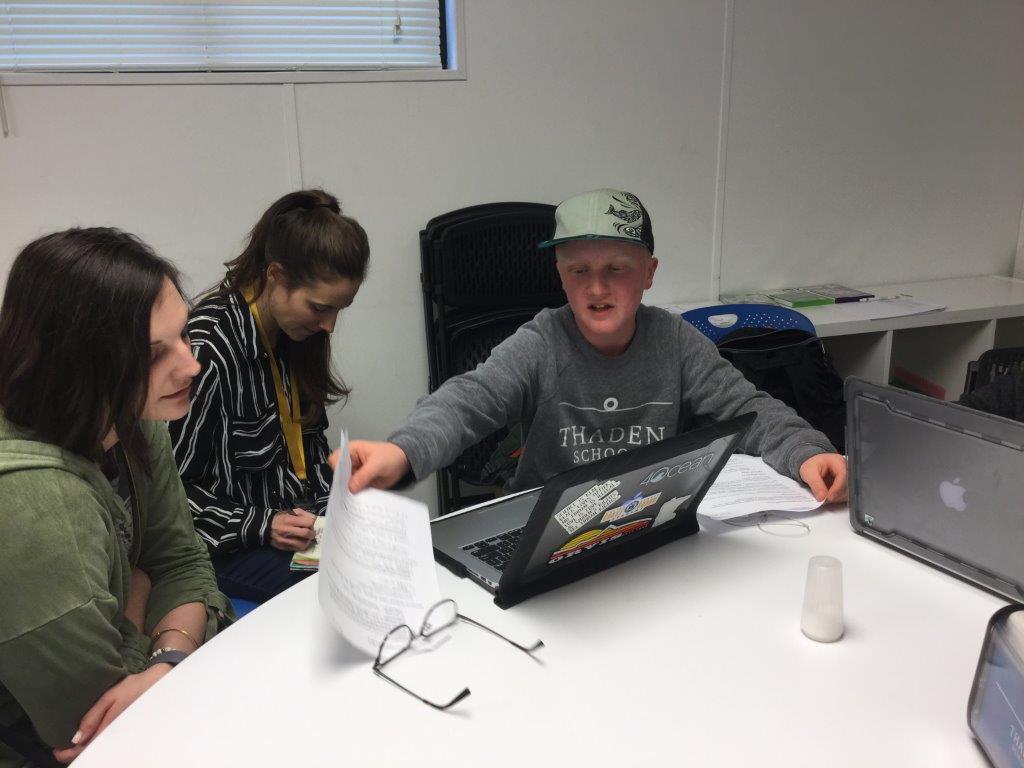PROFESSIONAL COMPETENCIES
Recognizing And Validating Learning
WHY IS THIS CRITICAL?
Rethinking how learning will be recognized and validated in a student-focused learning system requires that stakeholders recognize the competencies, skills, and dispositions that are critical to student progression and provide learners with opportunities to demonstrate their learning in a variety of ways. Teachers facilitate student ownership of learning by allowing them to have voice and choice in how their learning is assessed. Learners co-design, or fully design, ways in which they will demonstrate their learning, often through performance based assessments.
Multiple measures of assessment for learning, in order to make understanding and knowledge more visible, help learners understand what exemplars might look like and how they can develop their own work to reach that level. Questioning and feedback skills enable teachers to uncover learners thinking and understanding to identify where learning is strong and where timely support is needed. Metacognition--learning about one’s own learning--supported by dialogue between mentors and peers strengthens the recognition of and dedication to quality learning for all and strengthens self-direction for everyone.
How might rethinking how we recognize and validate learning encourage different ways for students to demonstrate their learning?

Self-reflection Guide
-
FOUNDATIONAL
While standardized and "one-size-fits-all" tests are the primary methods of recognizing and validating learning, HRSC the school team is beginning to consider other types of assessment to inform school-wide goals, learning gaps, and individualized learning needs. The school is beginning to focus on skills and personal competencies, in addition to measuring success on academic standards. Teachers are expanding what assessment of learning looks like in their building, including using visual and verbal assessment methods to recognize and validate learning, while providing immediate feedback to students. While the grading system is based on traditional letter grades, teachers are exploring grading practices, excluding behavior and attendance, as part of the grading system. The use of higher level questions expand to gauge more depth of knowledge. Teachers are reconsidering what grades mean and grades are becoming less reflective of seat time, attendance, and behavior.
-
DEVELOPING
Teachers are developing processes and protocols, while giving regular and immediate feedback on student learning. The school is beginning to use formative assessment, in addition to summative, to identify school and individual learner needs. HRSC Teachers work collaboratively and begin to rethink standards into a skills progression to scaffold student learning. Visual evidence of learning is represented in many classrooms. Teachers gain skills in questioning on all levels and are aware of the purpose of their questioning. The quantity of feedback in oral and written form is increasing. Meaningful discussions between adult and student learners impact and guide learning design. Promotion and grades are increasingly tied to students skills, and academic standards. HRSC Students set personal goals with teachers based on where they are along a learning progression, their next steps, and their goals for the future.
-
SUSTAINING
Recognizing and validating learning occurs as a process of learning as well as a way to demonstrate major milestones in learning. Students have opportunities to choose how their learning is assessed, and often co-design, or fully design, ways in which they will demonstrate their learning, often through performance-based assessments. Teachers routinely identify the underlying skills and competencies needed to achieve mastery of learning goals and monitor progress on individual skills as students work along a learning progression. Feedback occurs at all levels of the learning process and is based on mastering competencies. Visual evidence of learning is an integral part of the work. Teachers, students, and community are committed to questioning as a fundamental tool to ensure learning progresses. Every learner in the room is aware of his/her own metacognitive processes, growth on personal competencies and skills, and how that affects learning for the entire learning community.
What might I consider?
- How might increasing the amount, types and intensity of feedback improve student learning?
- How might using multiple measures of learning to assess student progress align with student-focused learning?
- What might allowing learner voice and choice in assessment of learning contribute to the learning process?
Where might I start?
Where might I start? Engage your team in a self-reflection on the critical attribute: Recognizing and Validating Learning.
Explore Recognizing and Validating Learning PROFESSIONAL COMPETENCIESUsed with permission. From Handbook for High Reliability Schools™: The Next Step in School Reform by Robert J. Marzano, Philip B. Warrick, and Julia A. Simms. Copyright 2014 by Marzano Research, 555 North Morton Street, Bloomington, IN 47404, 800.733.6786, www.marzanoresearch.com
